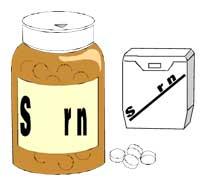Chemical sweeteners
2002/02/01 Lorenzo, Arantza | Uranga, Ane Miren Iturria: Elhuyar aldizkaria
The food industry currently uses more than 200 substances that barely provide energy for the enjoyment of food and beverages. In some cases, in addition, in the same meal more than one condiment is used, such as ice cream. But the indiscriminate use of these substances is harmful to health.
The condiments used as additives are classified into two groups:
1. Natural condiments: the best known are fructose, sorbitol, manitol and xylitol. We can find them naturally in the fruit. They have the following advantages:
- When aspiring to a level lower than traditional sugar, they have less kcal.
- They do not raise blood glucose levels, so they are recommended for diabetics.
- They do not produce cavities.
Among the disadvantages are that an enormous amount (greater than 40 g/day) can cause winds and diarrhea that children under 3 years of age cannot take due to the intestinal problems that cause them.
They are mainly used in sugar-free chicles.
2. Artificial sweeteners: the best known are saccharin (E-954), cyclamate (E-952) and aspartame (E-951).

Lately, researchers are conducting studies on: Acesulfamo K (E-950), taumatine (E-957) and neohesperidine (E-959).
These have been found from various substances, often by chance; for example, a German chemist in 1879 found that alkitran was obtained a sweet substance, saccharin, although research did not consider it usable until 1959.
Advantages:
- They do not offer kilocalories.
- They are very easy to use for their large ability to enjoy very small amounts. Saccharin, for example, is 300 times sweeter than sugar.
Disadvantages:
- They have no other nutritional benefits.
- They can pose a risk to health. They can cause cancer from nerve problems. Therefore, the FDA (Fodd and Drug Administration) has set the maximum of one day to avoid damage. For example, a maximum of 2.5 mg/kg of saccharin should be taken daily (i.e., a person of 70 kg can take up to 175 mg/day). Maximum 11 mg of cyclamate per kilo, 40 mg of aspartame per kilo and 9 mg of acesulfame per kg of K can be taken. The other two are still to be investigated.
In conclusion it can be said that we would only recommend artificial sweeteners in very special cases: very obese people, cases of diabetes, etc.
In fact, in general it is much healthier to add some sugar to coffee or milk and avoid the rest of candy as usual. That the aforementioned sweet drinks are also not common in our diet, since they have many artificial sweeteners.

Gai honi buruzko eduki gehiago
Elhuyarrek garatutako teknologia






